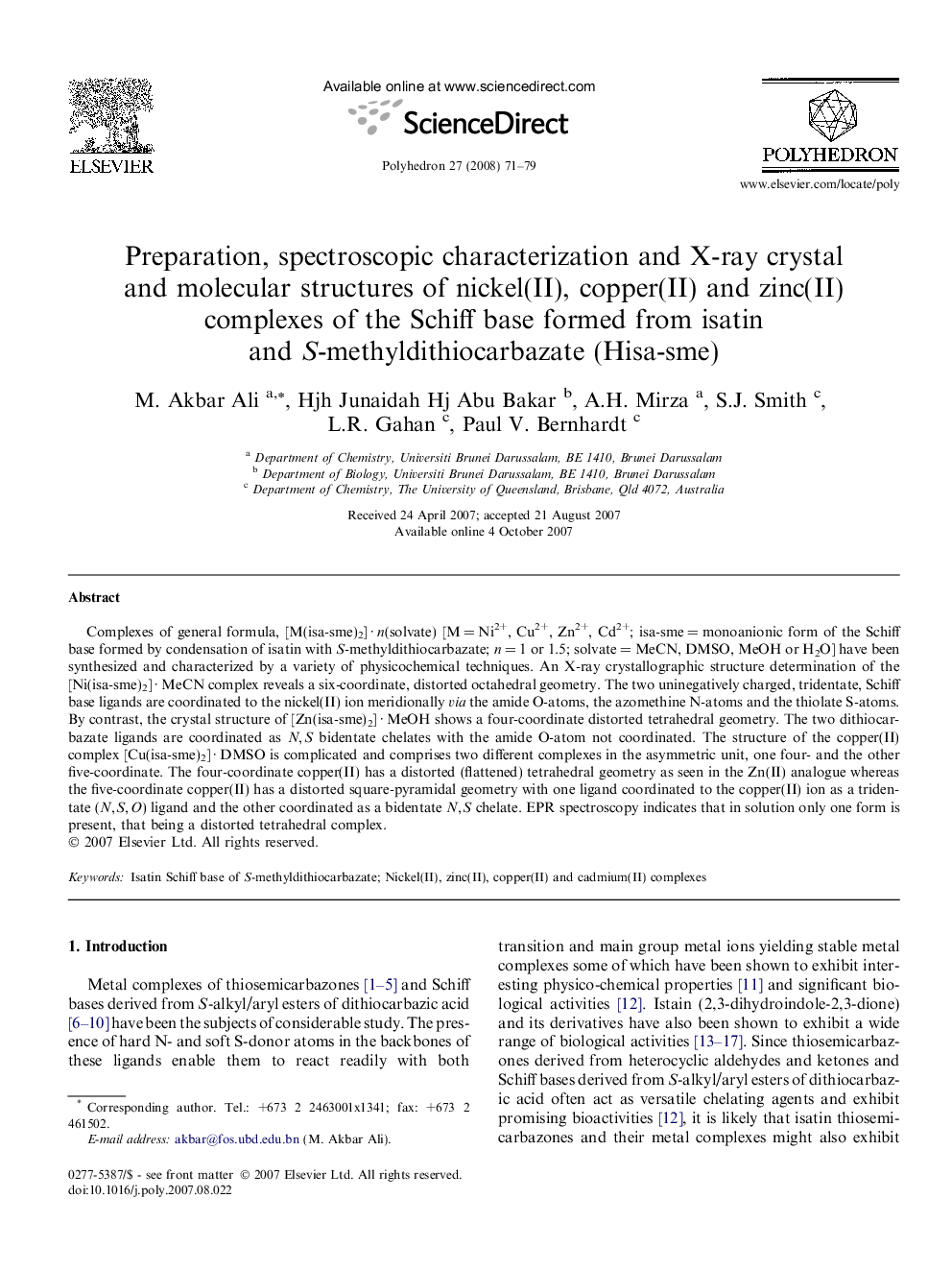| Article ID | Journal | Published Year | Pages | File Type |
|---|---|---|---|---|
| 1339572 | Polyhedron | 2008 | 9 Pages |
Complexes of general formula, [M(isa-sme)2] · n(solvate) [M = Ni2+, Cu2+, Zn2+, Cd2+; isa-sme = monoanionic form of the Schiff base formed by condensation of isatin with S-methyldithiocarbazate; n = 1 or 1.5; solvate = MeCN, DMSO, MeOH or H2O] have been synthesized and characterized by a variety of physicochemical techniques. An X-ray crystallographic structure determination of the [Ni(isa-sme)2] · MeCN complex reveals a six-coordinate, distorted octahedral geometry. The two uninegatively charged, tridentate, Schiff base ligands are coordinated to the nickel(II) ion meridionally via the amide O-atoms, the azomethine N-atoms and the thiolate S-atoms. By contrast, the crystal structure of [Zn(isa-sme)2] · MeOH shows a four-coordinate distorted tetrahedral geometry. The two dithiocarbazate ligands are coordinated as N, S bidentate chelates with the amide O-atom not coordinated. The structure of the copper(II) complex [Cu(isa-sme)2] · DMSO is complicated and comprises two different complexes in the asymmetric unit, one four- and the other five-coordinate. The four-coordinate copper(II) has a distorted (flattened) tetrahedral geometry as seen in the Zn(II) analogue whereas the five-coordinate copper(II) has a distorted square-pyramidal geometry with one ligand coordinated to the copper(II) ion as a tridentate (N, S, O) ligand and the other coordinated as a bidentate N, S chelate. EPR spectroscopy indicates that in solution only one form is present, that being a distorted tetrahedral complex.
Graphical abstractX-ray crystallographic structure determination of the [Ni(isasme)2] · MeCN complex (isa-sme = monoanionic) form of the Schiff base formed by condensation of isatin with S-methyldithiocarbazate reveals a six-coordinate, distorted octahedral. Structure By contrast, [Zn(isasme)2] · MeOH is four-coordinate and has a distorted tetrahedral geometry. The structure of the copper(II) complex [Cu(isa-sme)2] · DMSO is complicated and comprises two different complexes in the asymmetric unit, one four- and the other five-coordinate.Figure optionsDownload full-size imageDownload as PowerPoint slide
